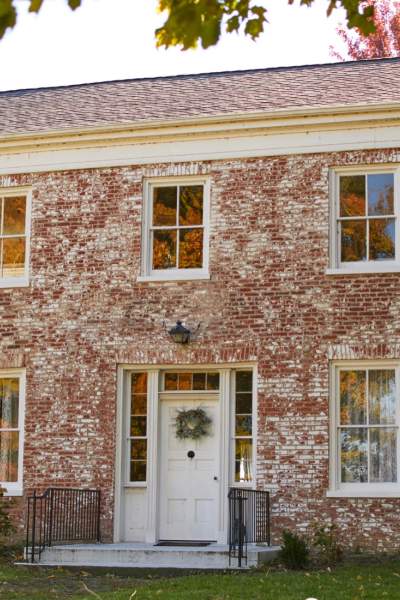Path to Freedom on Illinois’ Underground Railroad
Visit the secret places slaves stayed in Illinois while fleeing the South.
Aug 19, 2019 • Arts, Culture & History

After the Civil War, freedom seekers headed north toward freedom into Illinois. Even though Illinois was a free state, it was far from being a safe or welcoming place for them.
The state’s Black Laws denied African Americans most fundamental freedoms (gathering in groups, voting, bearing arms, etc.), and the Fugitive Slave Act required residents to return freedom seekers to their owners. Many areas were patrolled, hoping to capture freedom seekers and return them to their owners for a reward.
This meant they had to travel through Illinois discretely, usually under the cover of darkness. Freedom seekers would go from safe house to safe house—a path to freedom that came to be known as the Underground Railroad.
From Grafton to Galesburg to suburban Chicago, visitors can see the homes (maintained in their 19th-century style) and hear stories about this historic time.
Princeton
Many of Illinois’ Underground Railroad homes were owned by abolitionists and were located near rivers. One of the most famous is the Owen Lovejoy Homestead, a National Historic Landmark in Princeton. It’s named for the abolitionist preacher whose older brother, Elijah, was murdered in 1837 by a pro-slavery mob because of opinion pieces he published in the newspaper. Lovejoy moved to Princeton and became a proponent for ending slavery, helping hide freedom seekers in his home. Tours of his 1850s home show the hidden entryways to the cramped, tucked away places.
Quincy
The first stop for several hundred freedom seekers on this side of the Mississippi River was at Dr. Richard Eell’s House in downtown Quincy. Those who crossed the border from Missouri would hide out in this two-story early-1800s home. Today, Dr. Eell's house is the oldest standing two-story brick house in Quincy.
Jacksonville
There’s a nine-stop tour of Underground Railroad locations around town showing spots where hundreds of freedom seekers hid, including Beecher Hall and Woodlawn Farm.
Alton
This Underground Railroad town along the Mississippi River offers in-depth tours. Explore Black History on a guided shuttle tour where stories and songs are used to bring the city’s history to life. Dive in to the past and learn about Alton’s significance on the Underground Railroad, discover the legendary abolitionists who fought against slavery and follow the stories of local Civil Rights leaders who made their mark on the city and the nation.


Oakland
Eastern Illinois had a safe haven for freedom seekers in Oakland, at the home of Dr. Hiram Rutherford, a good friend of Abraham Lincoln’s. Rutherford was involved with the famous Matson Slave Trial in 1847, where it was debated whether freedom seekers living in the area were free. The judge ruled in favor of the freedom seekers, and a Black community eventually formed there.
Suburban Chicago
Freedom seekers that made it to northern Illinois stopped at dozens of Underground Railroad sites in Chicago’s western suburbs. Wheaton College’s Blanchard Hall housed many in underground tunnels. The tunnels are no longer there, but the college does have a permanent exhibit about it on the building’s first floor.
There’s more to see at Graue Mill and Museum in Oak Brook, a property on the National Register of Historic Places. The mill’s owner, Frederick Graue, housed freedom seekers in the basement of his gristmill on Salt Creek. Both Black and white abolitionists would bring them food here. Tours of the property are offered in the spring and visitors can stop in the museum which has photographs, documents and interactive displays that tell the property’s “station” history.
The Lombard Historical Society gives tours of the Sheldon Peck Homestead on Tuesdays, Thursdays and Saturdays (seasonal). An artist and radical abolitionist, Sheldon Peck’s home was used as a headquarters for all opponents of slavery. He risked fines and imprisonment by letting freedom seekers stay on his property.
The National Park Service is continuing to work to preserve some of these Underground Railroad sites across Illinois, as well as improve their educational efforts.
Share your Moments
#EnjoyIllinois



